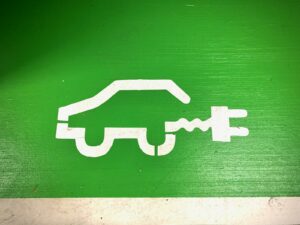Jaguar Land Rover (JLR) has partnered with renewable energy specialists Wykes Engineering to use their ‘second-life’ batteries to store solar and wind power in one of the largest energy storage systems in the UK.
Using 30 of JLR’s second-life I-PACE batteries, a single Wykes Engineering battery energy storage system (BESS) can store up to 2.5MWh of energy at full capacity.
The batteries have previously been used in JLR’s prototype and engineering test vehicles and, by the end of this year, they aim to have supplied Wykes with enough of them to store a total of 7.5mWh of energy, sufficient to power 750 homes for a day.
JLR’s batteries are of a sufficiently high standard that, once their health falls below the requirements of an electric vehicle, they can be used in low-energy situations just as this, usually with around 70-80% of their residual capacity left.
Furthermore, once the re-purposed battery becomes unsuitable for storage use, JLR will recycle them so the raw materials can be recovered for re-use as part of a circular economy.
The battery installation itself is minimal – they are simply removed from the Jaguar I-PACE and slotted into racks in the containers on-site.
Each BESS is capable of supplying power direct to the National Grid during peak hours as well as drawing power out of the grid during off-peak hours to store for future use.
Francois Dossa, Executive Director, Strategy and Sustainability at JLR said: ‘Our sustainability approach addresses the entire value chain of our vehicles, including circularity of EV batteries. Our EV batteries are engineered to the highest standards and this innovative project, in collaboration with Wykes Engineering, proves they can be safely reused for energy sector application to increase renewable energy opportunities. Using the 70-80% residual capacity in EV batteries, before being recycled, demonstrates full adoption of circularity principles.
‘Working together with industry-leading partners, we are developing a complete EV ecosystem, from batteries to charging, supporting our net-zero transformation.’
David Wykes, MD of Wykes Engineering said: ‘One of the major benefits of the system we’ve developed is that the containers are connected to the Grid in such a way that they can absorb solar energy, that could otherwise be lost when the grid reaches capacity. This excess energy can now be stored in the second life I-PACE batteries and discharged later. This allows us to ‘overplant’ the solar park and maximise the amount of power we generate for the area of land we are using.’
















Leave a Reply